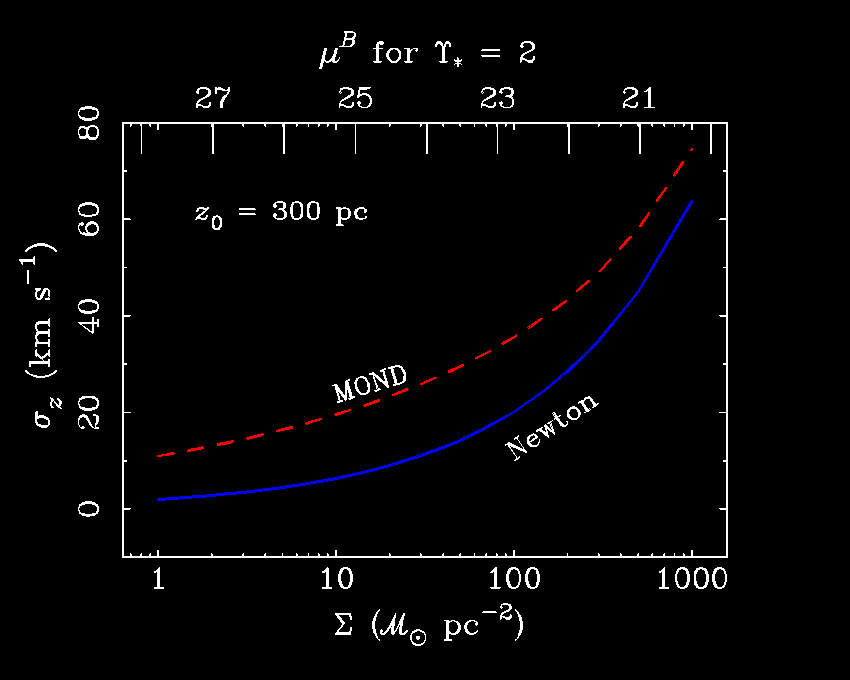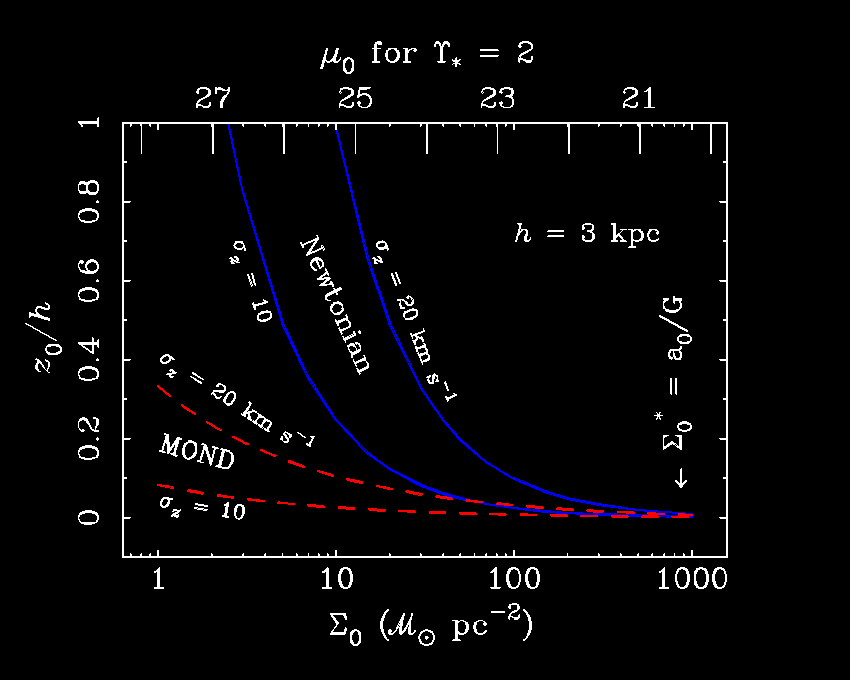

Qualitatively, MOND helps explain why we never see gas velocity dispersions drop below about 7 km/s (when they should be ~2 km/s) and how we can have exceptionally thin disks like UGC 7321. MOND provides a greater restoring force than a pure Newtonian disk would. (LSB galaxies whould all be very thick in the conventional picture, but they are not.)
In practice, the distinction between a Newtonian and MONDian disk do not become pronounced until very low surface brightness (~25 mag/[]). This makes it hard to apply this test. Moreover, MOND is very sensitive to the detailed mass distribution of each object - it is not going to work to mix & match face-on and edge-on galaxies as is done in this paper any more than it would work with a purely Newtonian system where all the mass is actually observed. One simply needs more information to attempt this (see [355]).

Vertical velocity dispersion of a pure exponential disk as a function of surface mass density (bottom) or surface brightness (top) for a constant scale height of 300 pc (e.g., the Milky Way). The MONDian disk has a higher velocity dispersion than the purely Newtonian equivalent, though the difference only becomes pronounced at very low surface densities. Here, the velocity dispersion of MONDian disks remains ~10 km/s as the Newtonian equivalent goes to zero.

Disk thickness (scale height divided by scale length) as a function of the central surface density (bottom) or central surface brightness (top) of an exponential disk. The vertical velocity dispersion is held constant to illustrate how disks would flare in the Newtonian and MOND cases. At high surface densities, the two are indistinguishable. At low surface densities, MOND can maintain a thin disk for typically observed velocity dispersions while the Newtonian case flares dramatically. MOND provides a natural explanation for very thin, low surface brightness disks like UGC 7321.
